Earlier this year, Pete Bebb explained the work of DNEG on Greyhound. He’s back to talk about the crazy action sequences on the Paramount movie, Infinite:
How did you get involved on this show?
Paramount approached DNEG with the potential of working on this film with Antoine Fuqua. I am a huge fan of him – Shooter is favorite film of mine. Of course Training Day is a classic as well, but everyone says that!
What was your feeling to work with Director Antoine Fuqua?
In awe, really. Antoine Fuqua has an amazing track record and this film was a slight change to his usual repertoire, so I was very interested to be considered to work with him on this creative venture.
What was his approach and expectations about the visual effects?
Antoine has a very established process for how he makes films, he gathers huge amounts of visual references and combines them in to ‘look books’ which instruct all departments as to how he is thinking a particular set, scene or visual should look. VFX is just another dept within that mix, which is good.
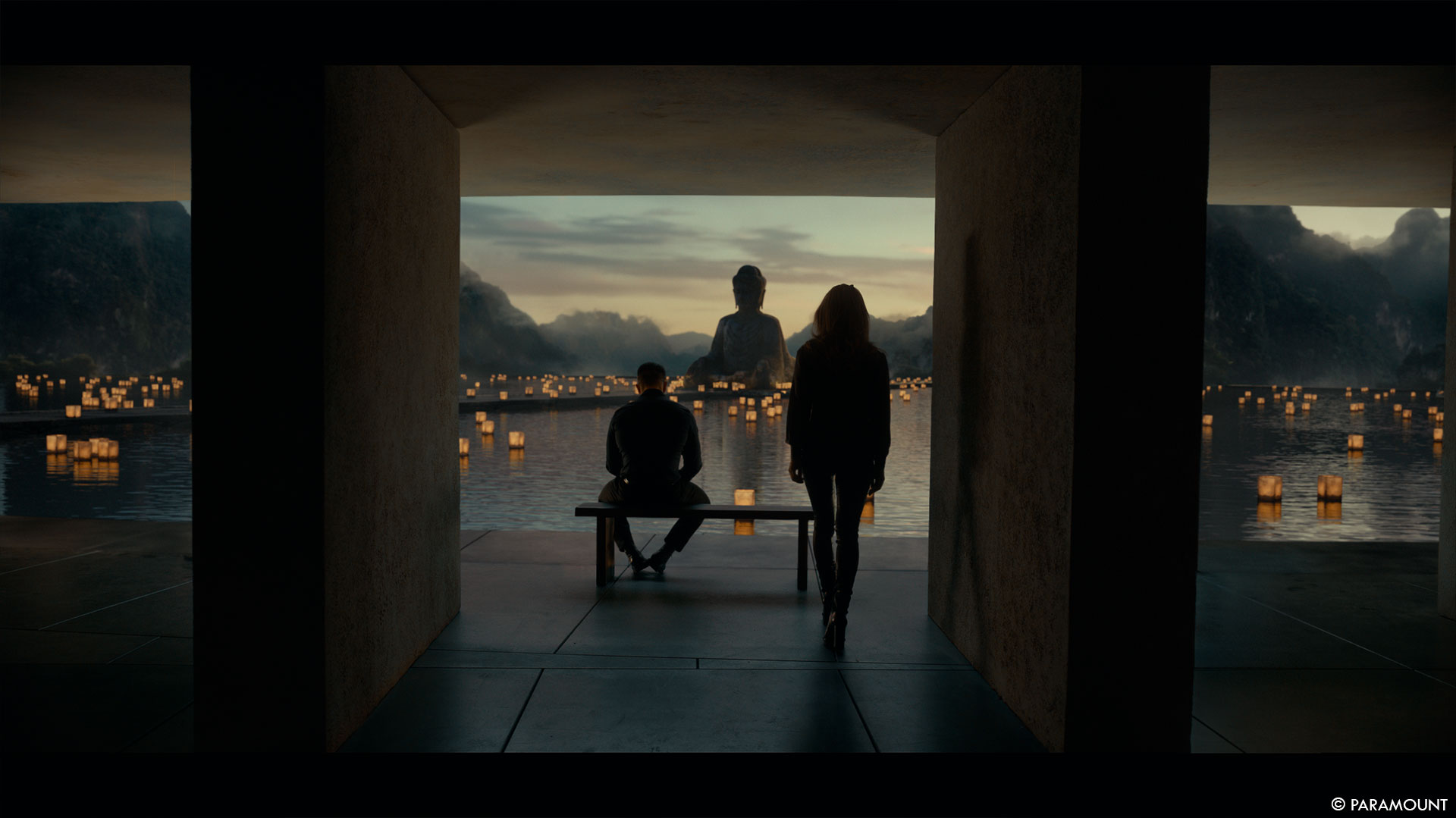
How did you organize the work with your VFX Producer and the DNEG VFX Supervisors?
Same as any show really until the pandemic hit of course – then it was a slightly more remote than usual. As with most of the world Zoom came in to play in a big way. The work was split between various locations – MTL, LON and MUM.
How was split the work amongst the DNEG offices?
We tend to keep sequences within one location so there is not a mix of shots within the same sequence. I also tend to try and keep the work per the supe who has either covered it on set with me or shot plates for their specific sequences. Keeps it simple.
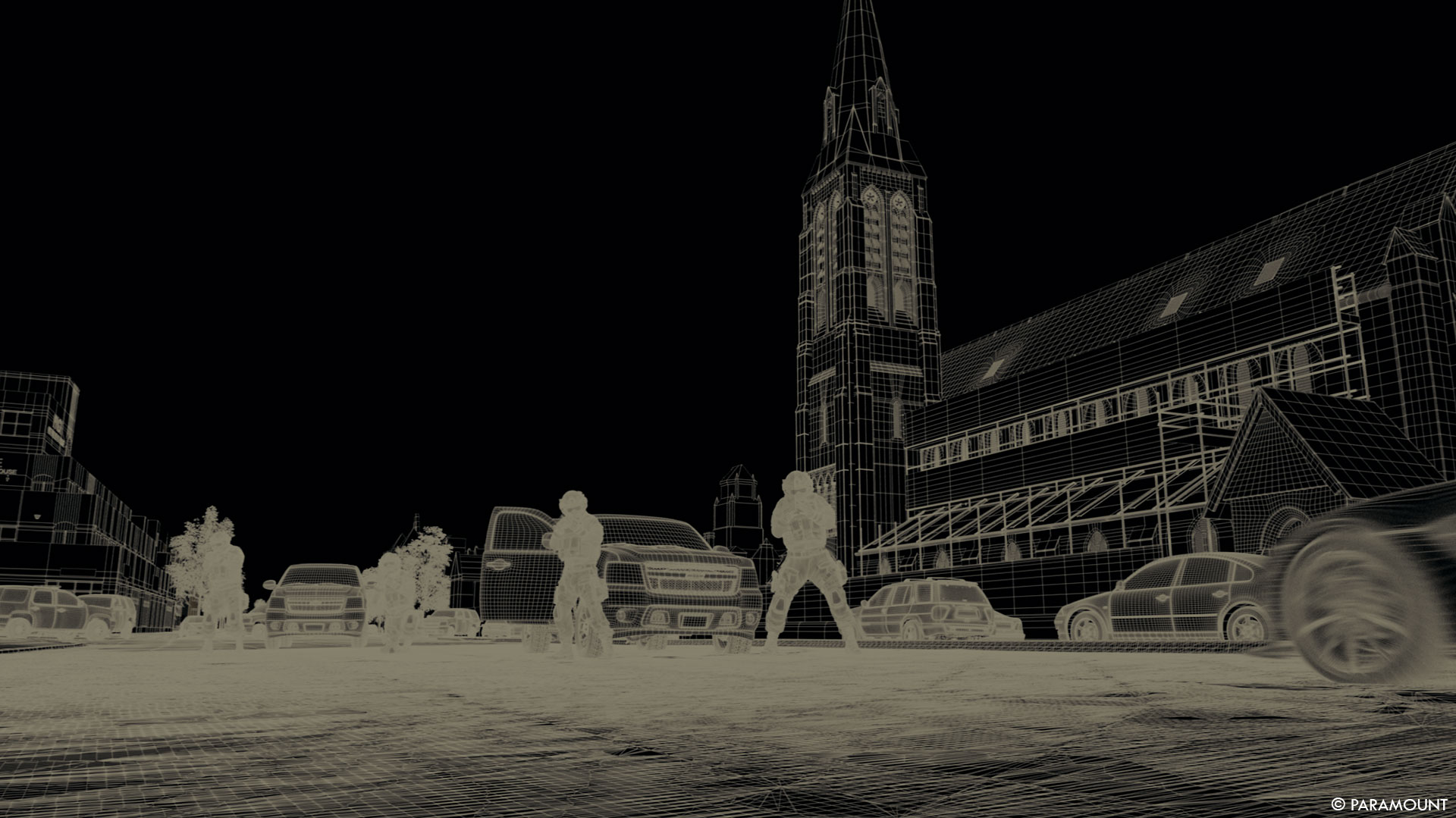
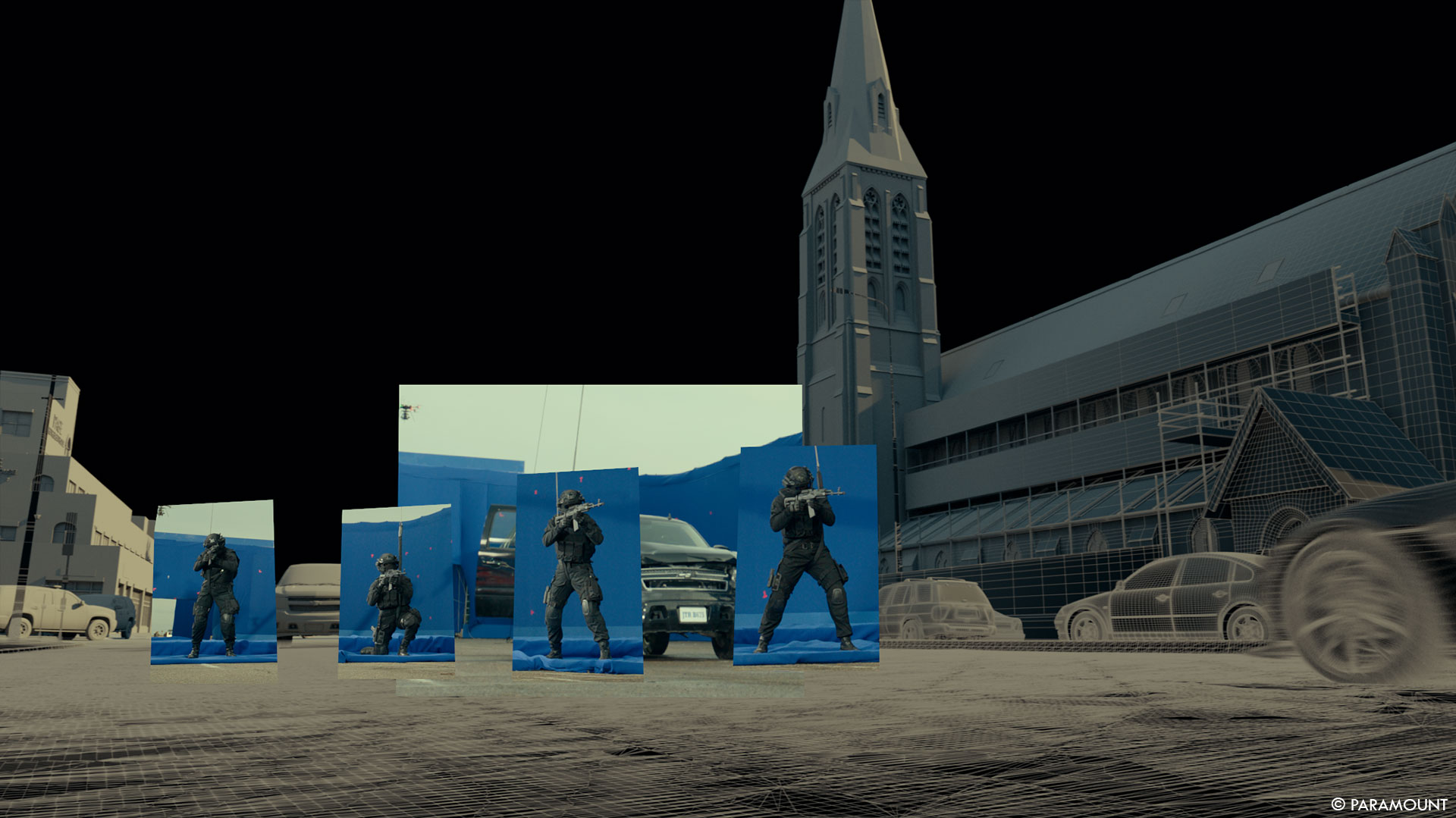
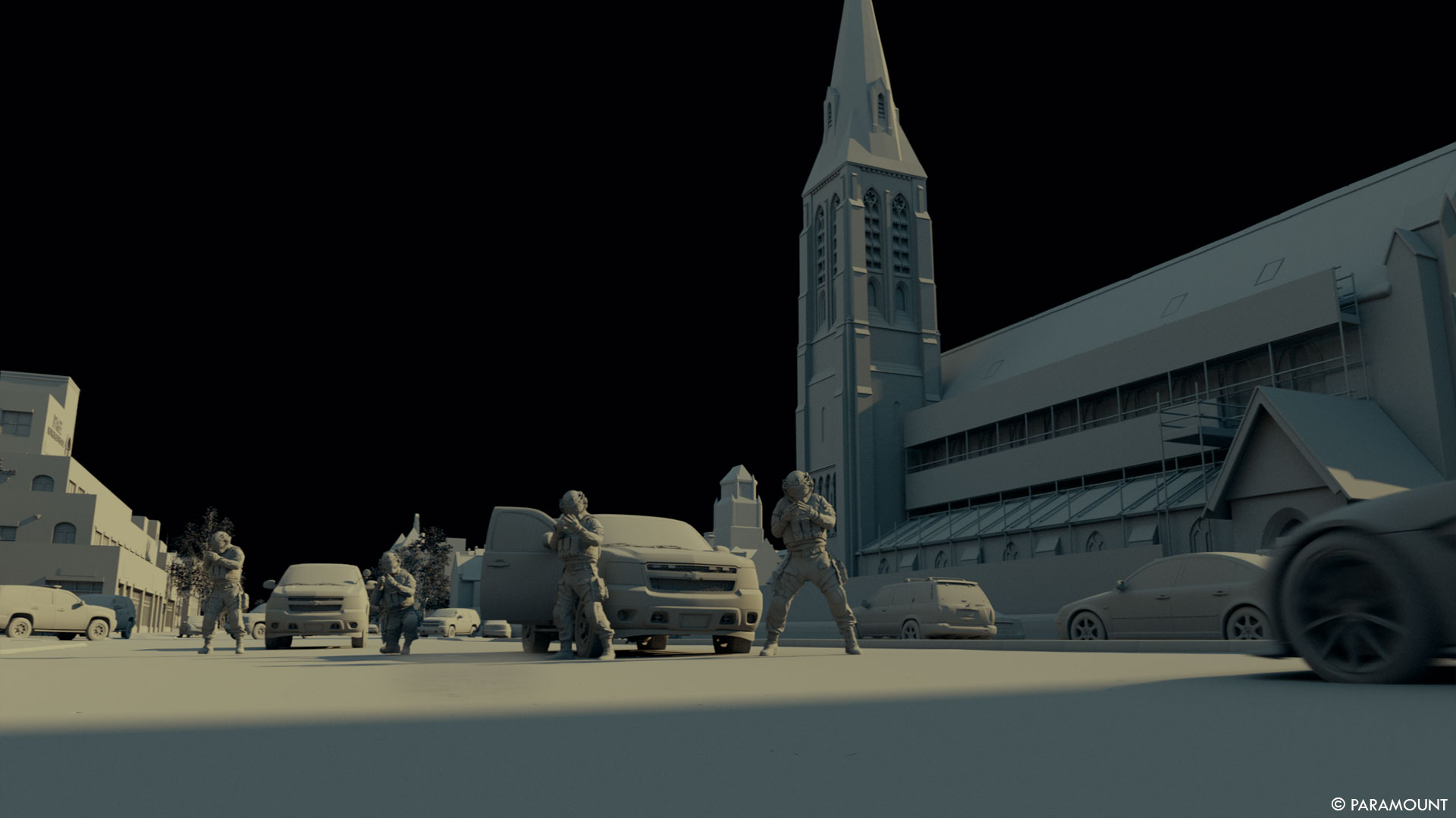
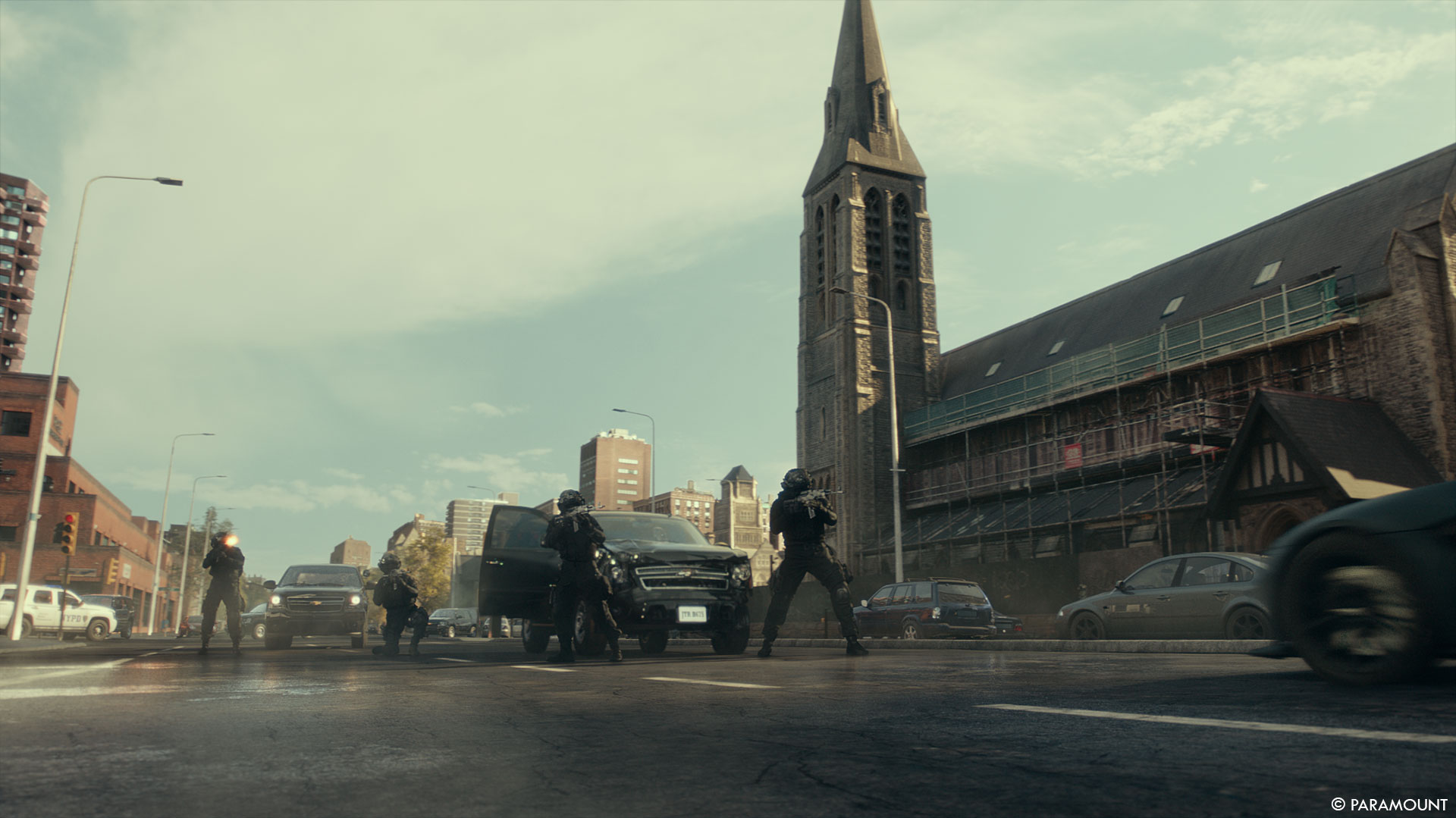
How did you enhance the various car chases and destructions during them?
Originally there was more of a play toward the ‘time effect’ but as the film panned out this was reduced as Antoine wanted more of raw old school car chase. Most of the action is real – there was a huge push for shooting for real if you can. Car chases are a known entity in this respect so real Ferraris and Astons were thrashed and, unfortunately, crashed to obtain this opening sequence.
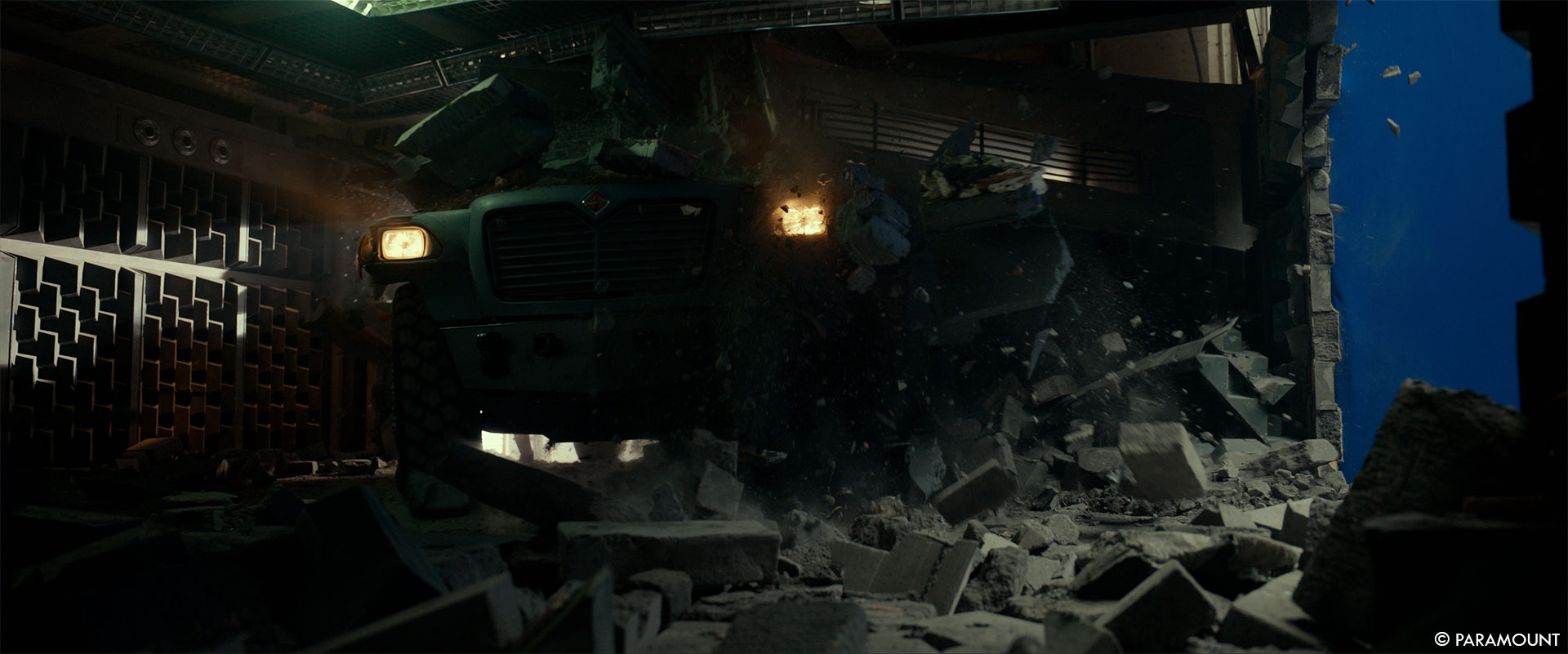
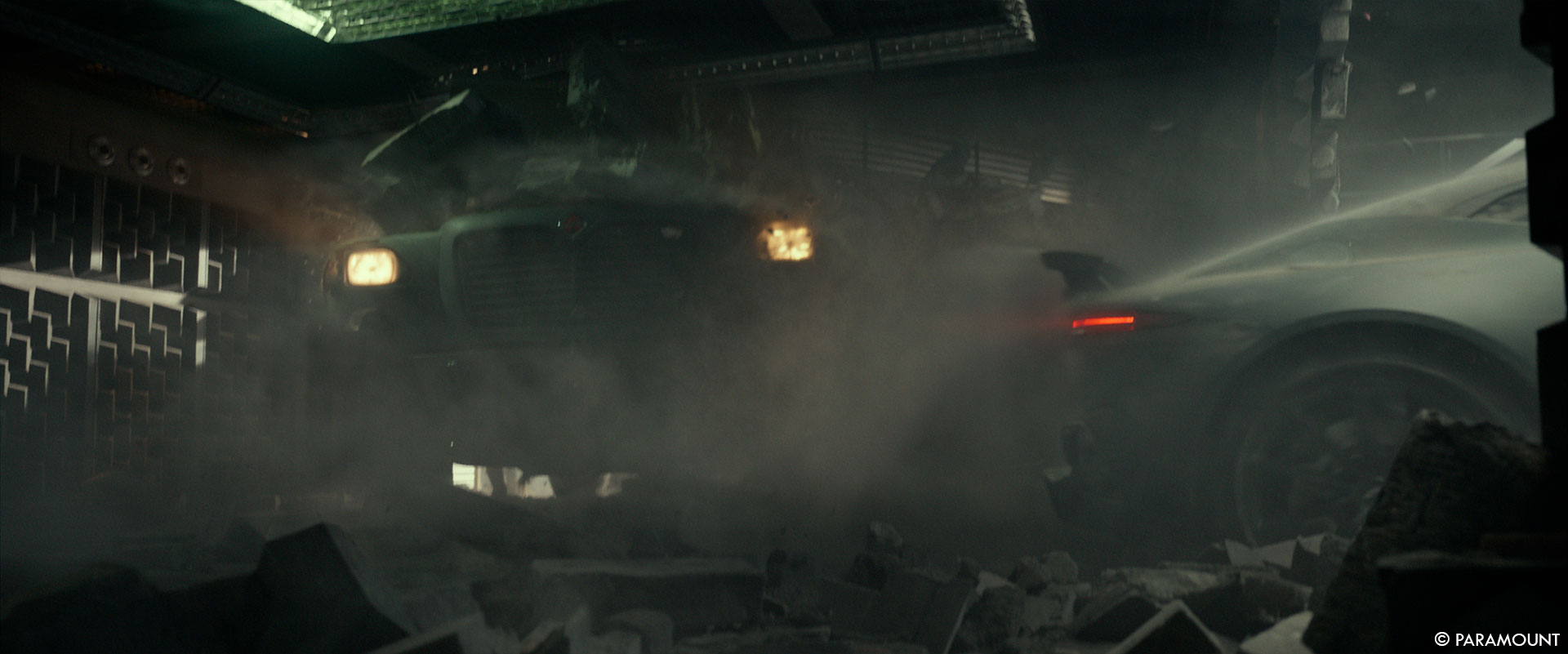
Can you explain in detail about the design and creation of the really cool Bathurst Dethroned?
The concept behind Bathurst’s design ethic was that of artisan meets tech. Hence his weaponry was very elaborate and intricate in its aesthetic but cutting edge in its manufacture. Bathurst being immortal and appreciating the finer things in life but requiring the need for the ultimate weapon is the reason for this.
We discover a beautiful place during the movie, The Hub. Can you elaborate about its design?
Chris Seagers, Production Designer, did an amazing job creating this space for the Infinites. Both inspired by Zen philosophy of respect and harmony with nature but also allowing for a very up to date modern and practical environment. The intention was to combine this with a unique location, somewhere both beautiful and secluded. Khao Sok National Park in Thailand. The VFX allowed us to compliment this HUB structure with subtle and awe inspiring technology but keep it very minimalist in its design.
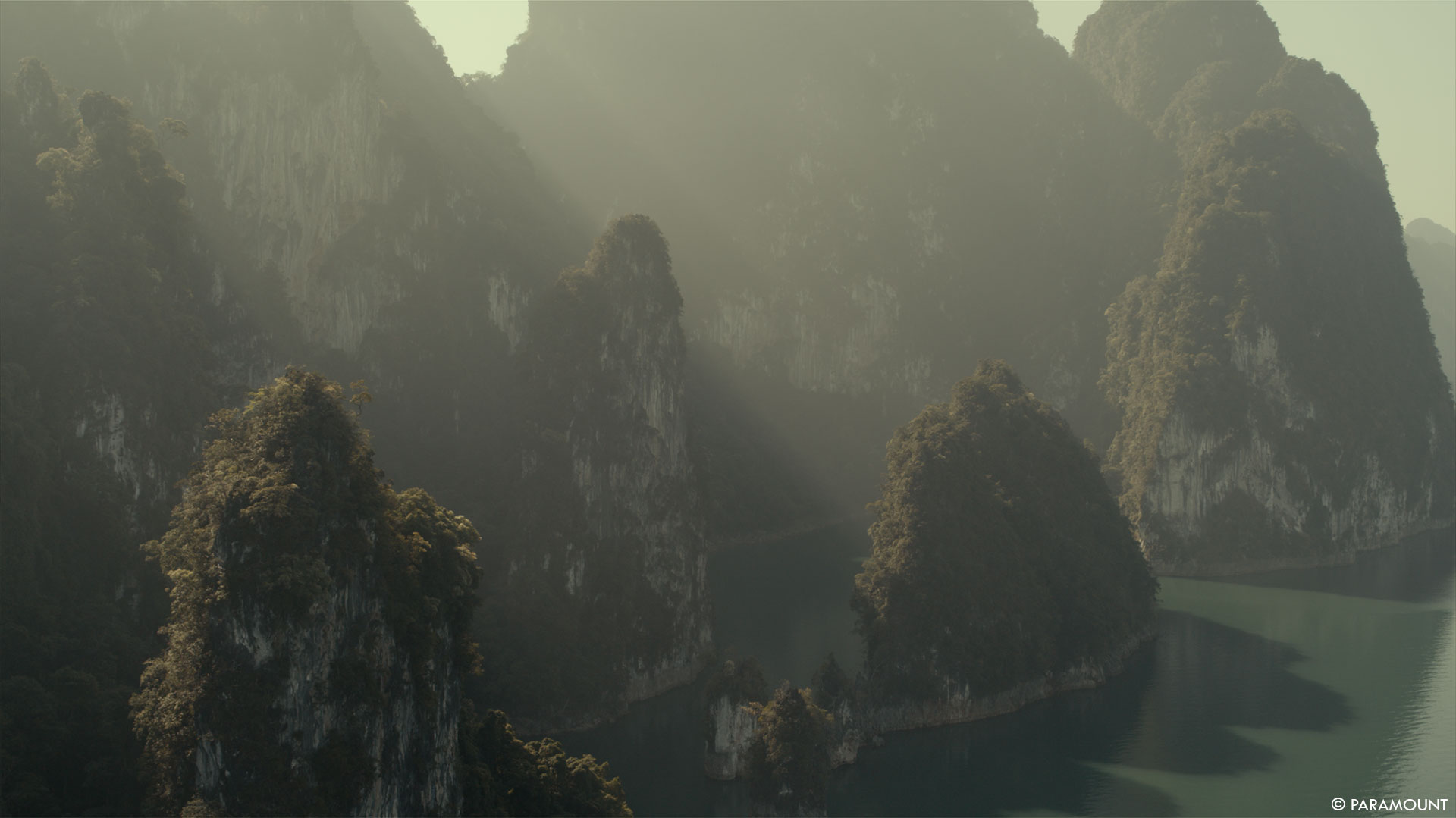
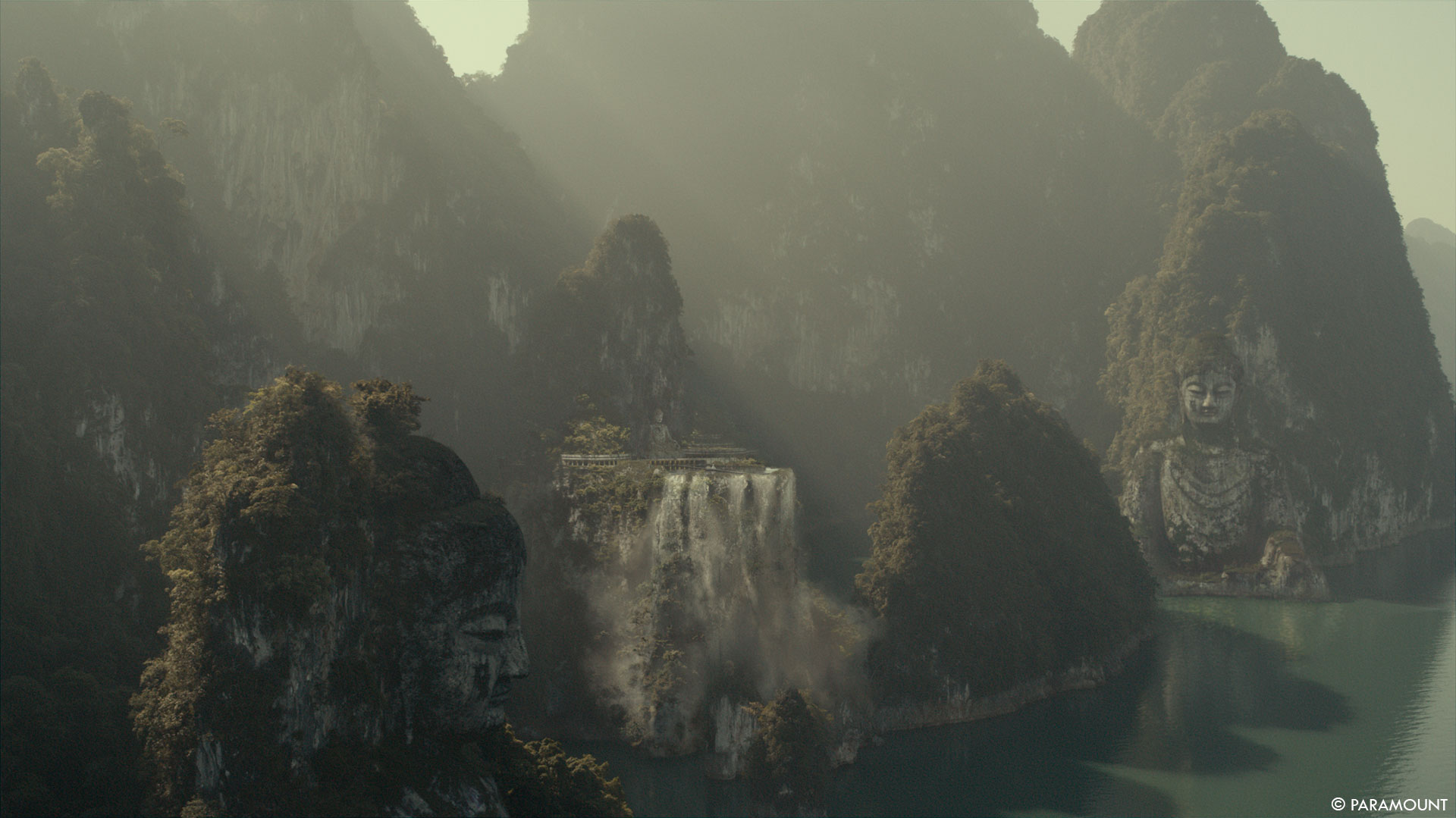
Can you explain in detail about the creation of this environment and especially the waterfall?
As the design ethic was to be sympathetic with the natural environment the location we found was not modified to any great extent. We retrofitted the original design from Chris in to the geography/layout so it felt as if it was bespoke to that specific location. Antoine was very keen to have water as a main impetus for the overall design of the Hub. Water was used as a means of spirituality and architectural impact.
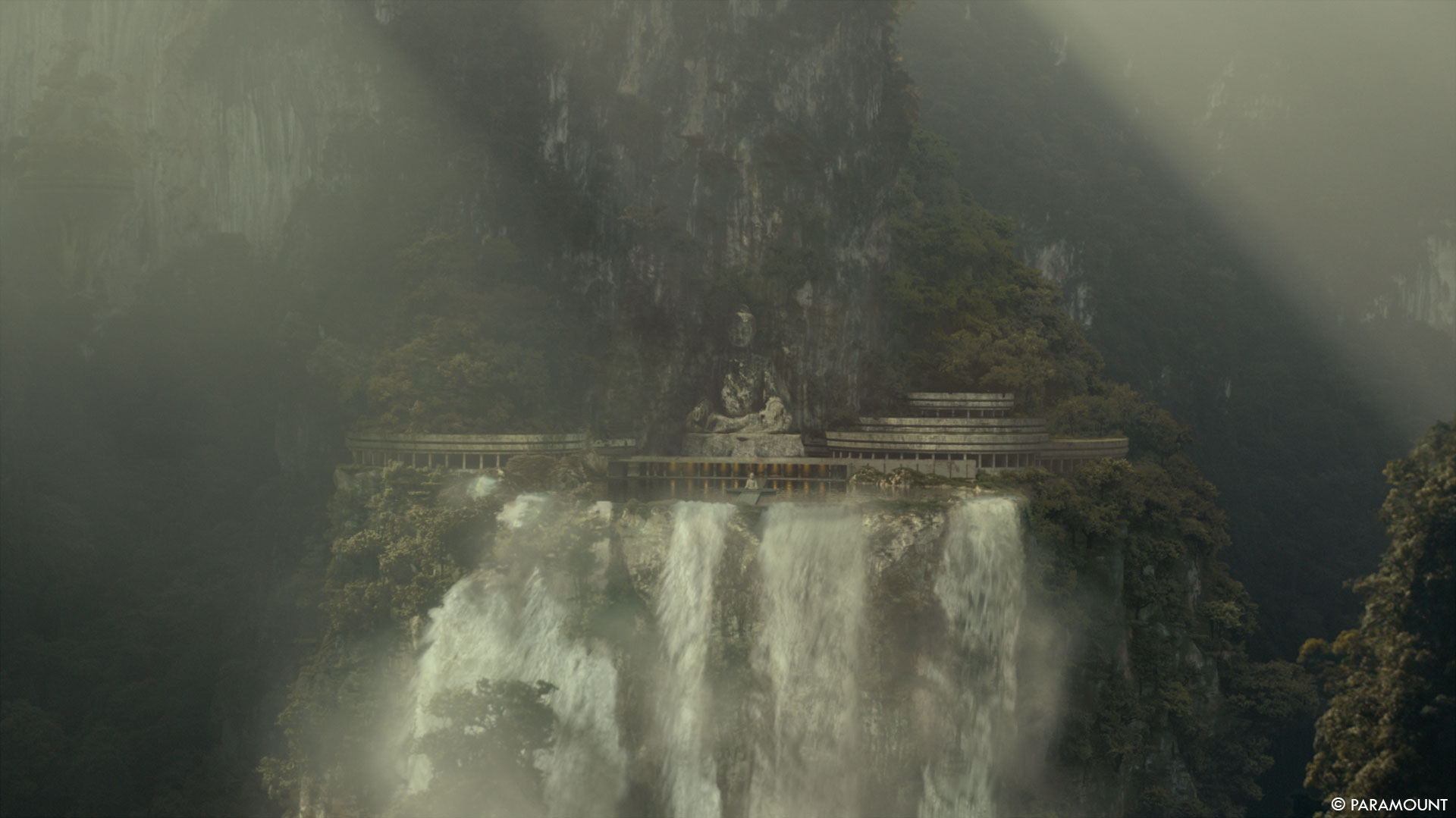
Can you tell us more about the Buddhist temple?
The conclusion of the film is located in Angkor Wat however it was not shot in Angkor Wat. You cannot film there anymore due to it being a World Heritage Site and previous shoots have been less than respectful it seems. Thus we gained permission to data wrangle only. Lidar scanning and photography was conducted in order to build a CG version of the main temple and its surroundings. This was both utilized in the final shot and the Memory Hall sequences, albeit far more elaborate and grander in the scale of his mind.
Can you elaborate about the crazy Jet fight sequence?
Full scale sections of the plane were built for the various fight beats on the exterior of the plane, these shots were also shot outside to give us the most natural light for this sequence. The individual sections were remote gimble controlled to allow for real reaction from Mark and correct movement of light and reflection. All these shots were previs and then tech-vised to allow for both accuracy and efficiency on shoot day. These shots were then tracked in to a full CG version of the C17 and placed in our virtual environment of Scotland.
The hero jump on the plane from a cliff with a bike. How did you create the insane stunt?
Originally we were considering jumping a motorbike off Neist Point in Scotland but on location this was then considered far too dangerous, although I am sure stunts would have done it! The initial jump was a stunt rider riding right up until the edge of the cliff, kind of crazy in hindsight as it was a 1000ft drop with only a flimsy wire fence to stop sheep hurling themselves off. We then carried the bike riding action in CG for the jump on to the C-17 which was of course CG.
For the landing we decided we could build a 1/1 section of plane wing on the ground and then jump the real motorcycle on to it and kick it into a slide for the latter part of the landing. This was then combined with the CG version of the C-17.
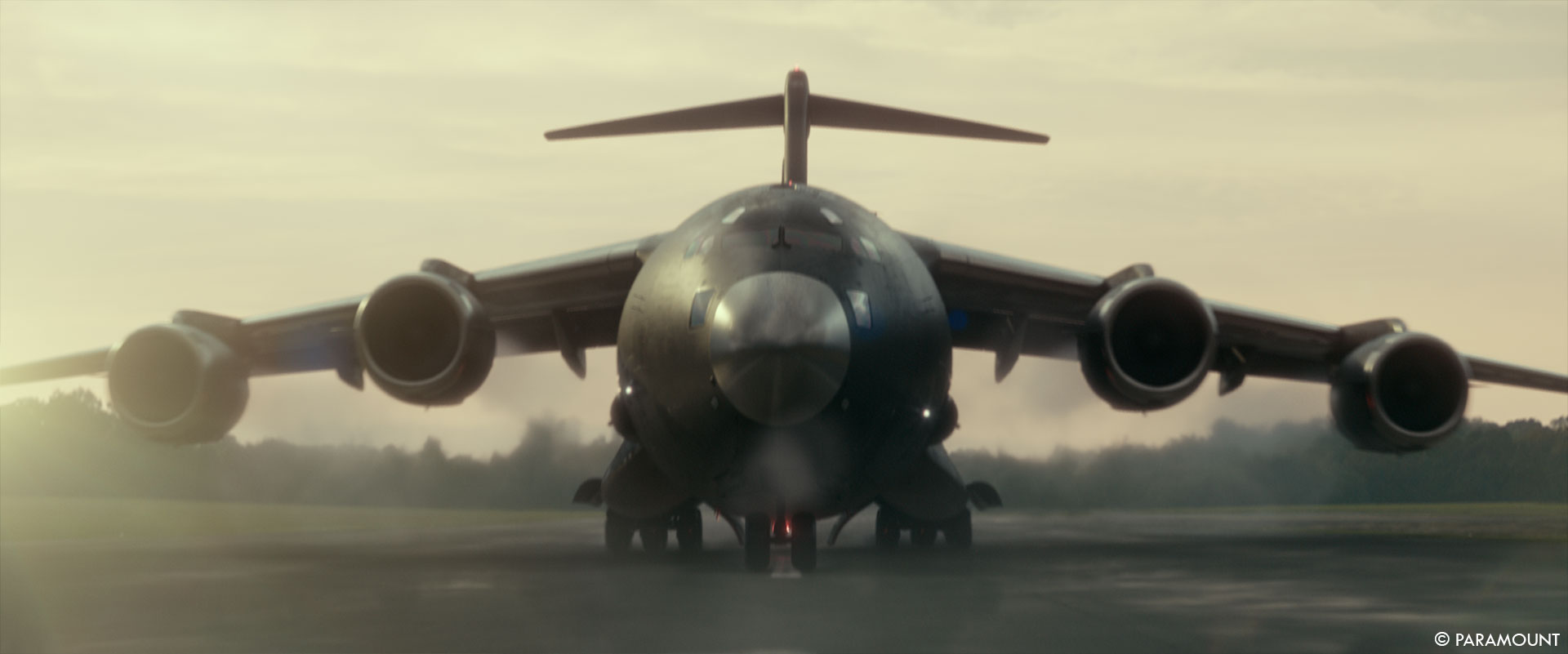
How did you work with the stunt and SFX teams for the fight inside the C-17?
As the penultimate fight is conducted in the main hold of the C-17 whilst the plane is out of control it was necessary to build a full-scale section on a fully rotating hydraulic gimble. Hundreds of tons of steel were used to create this massive structure and it could spin and articulate at quite a rate. The entire inside was formed of foam rubber so stunts did not hurt themselves as they were being literally thrown around. The entire structure was so big it could not fit in a stage – a bespoke tent had to be constructed to house it. With this being constructed all of our action was real, with very little VFX being used aside from wind, dust and debris to sell the idea of both altitude and motion and also justifying the hole in the fuselage.
Can you explain in detail about the C-17 creation and destruction?
Well, if you’re wealthy and evil you need a huge plane hence the use of a C-17 Globemaster. Of course the sheer scale of this plane brought with it both impact and heartache. The screen never really sells the sheer scale of this aircraft but it is quite something in the flesh. Knowing this we photographed an actual plane at RAF Brize Norton and found some hero footage to match to for ldev and anim. Unfortunately renting this aircraft was not possible as we’d have liked to have shot it for real on some of the sequence.
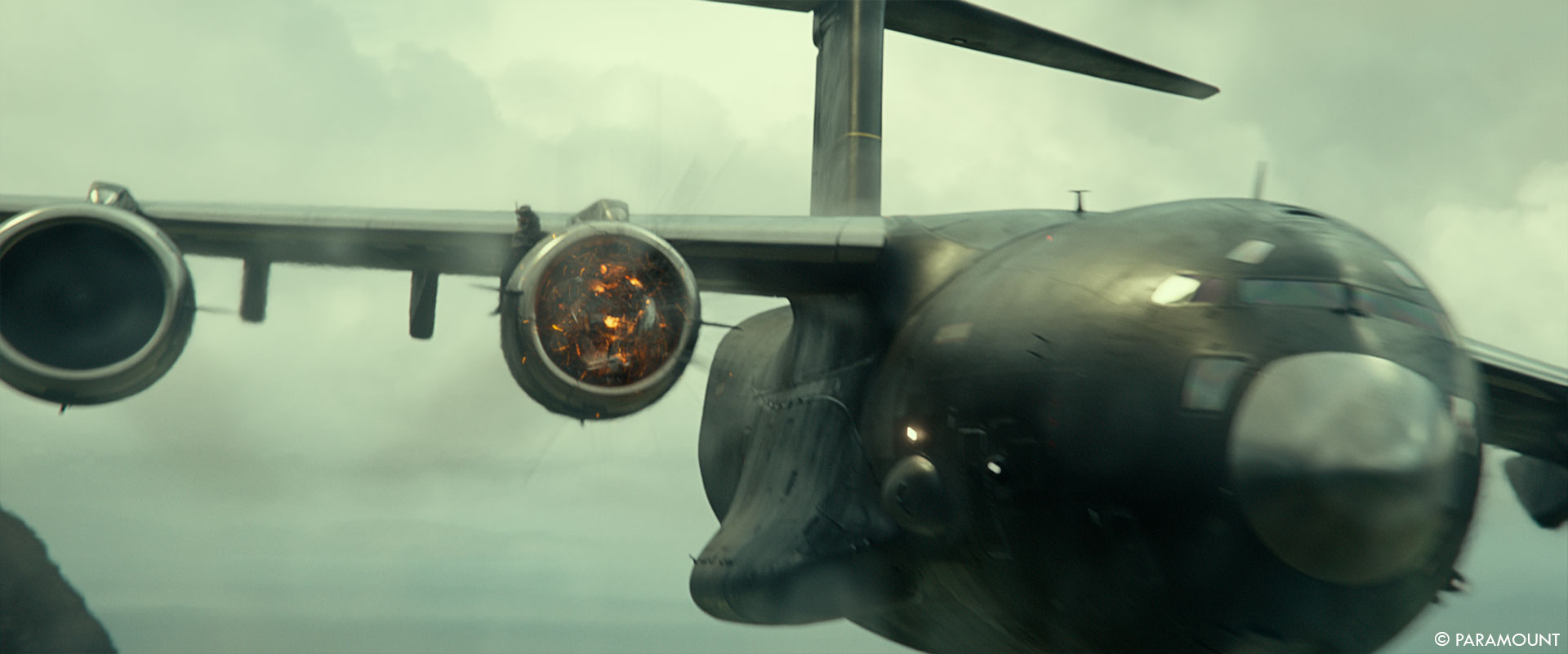
How was filmed and created the free fall sequence?
Best to shoot it for real – but when that is not possible, then hire a giant fan and stick the principles in that. So that’s what we did. The sequence was shot outside with great natural light – so in essence they were actually skydiving. Although expensive and requiring practice the result was great. We had a few pick-ups we had to conduct against GS but that would always be the case for narrative and the obvious restrictions you have on an epic free falling contraption as we had. Once we have the characters in free fall we then created a CG environment for them to fall through, creating pace through atmosphere, through camera and cloud, and the imminent danger of the sea coming toward them. The plates were also reshot in CG to give us more motion on the camera, a handheld, slightly messy composition was applied to give us a raw visceral feel that you tend to get in actual sky dive footage.
The movie is full of graphics and holograms. What kind of references and influences did you received for them?
MGFX are key and the design ethic/theme has to be established early on for the good guys and the bad guys. As mentioned earlier Bathurst graphics reflected his artisan / tech nature. Whereas the Infinites are far more Bauhaus in their style – ‘form follows function’ nothing elaborate and nothing shown without purpose. Holograms we kept relatively straightforward, nothing too fancy or fluffy. It was not that type of film.
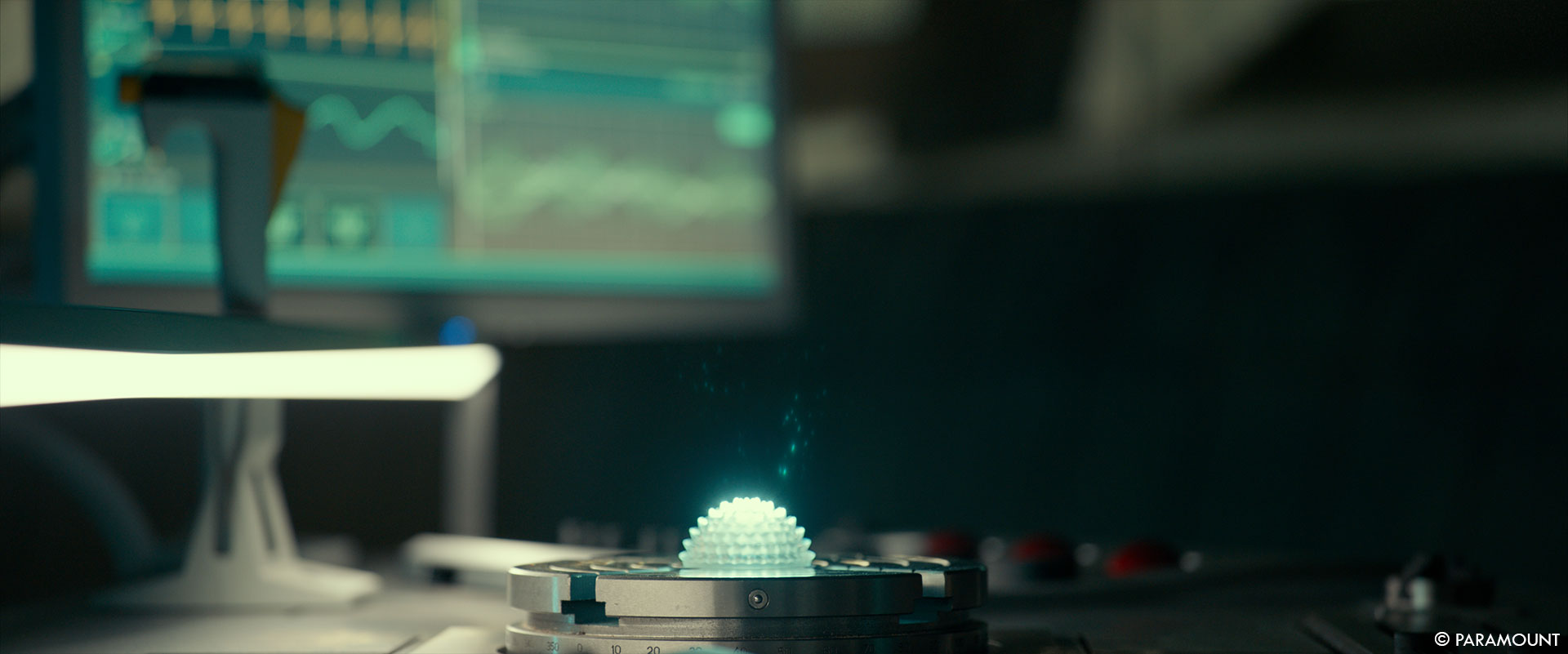
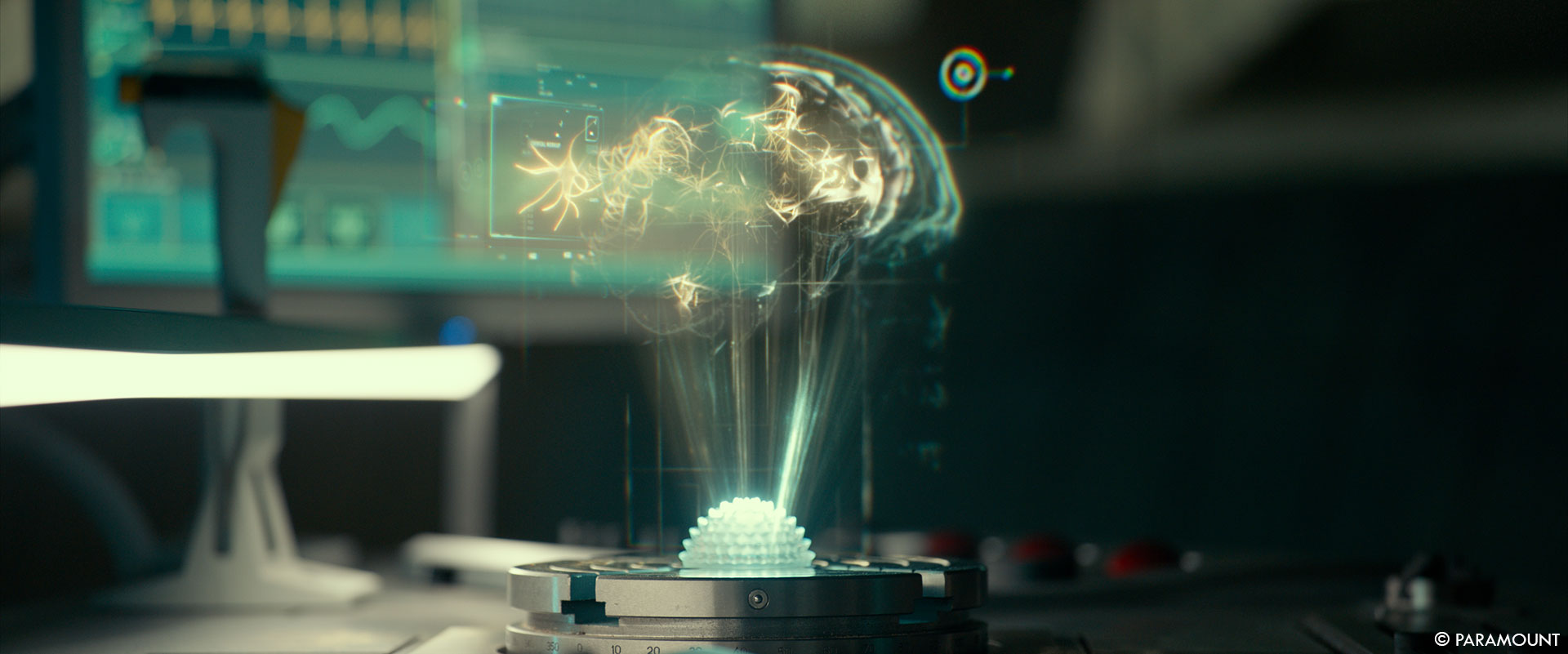
Can you elaborates about their creation and animations?
The motion graphic animation reflected their design for the Infinites. Again simple and to the point so you can understand what is going on. However for Bathurst the GFX hologram was designed to be more of a dance, originally set to a piece of classical music. The premise being Bathurst enjoys the hunt, he has conducted many in his life-times so it needed to be something more – a choreographed performance whereby we gave Chiwetel rough narrative objectives but really let him go for it!
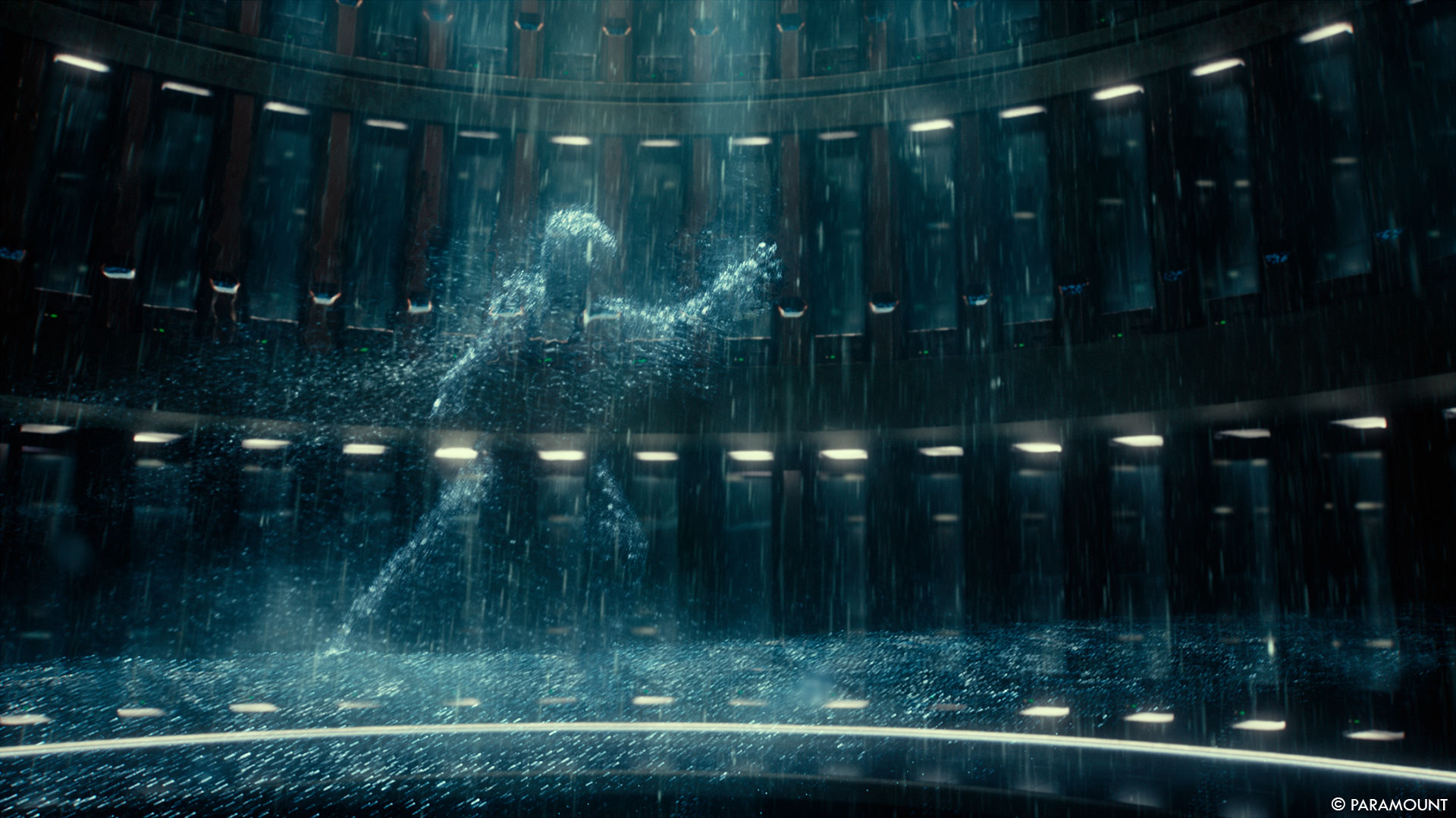
Which sequence or shot was the most challenging?
Most sequences had their challenges but the main Police Station street explosion was tricky as a the latter part of the sequence had to be done against huge BS container stage outside due to the restrictions on the actual Cardiff location. It all had to seamlessly blend together hopefully without the audience noticing. Also the nature of the explosion had to be different and unique, a ballet whereby the Infinite’s Aston glides through the turmoil of the multiple explosions and mayhem. Almost untouched!
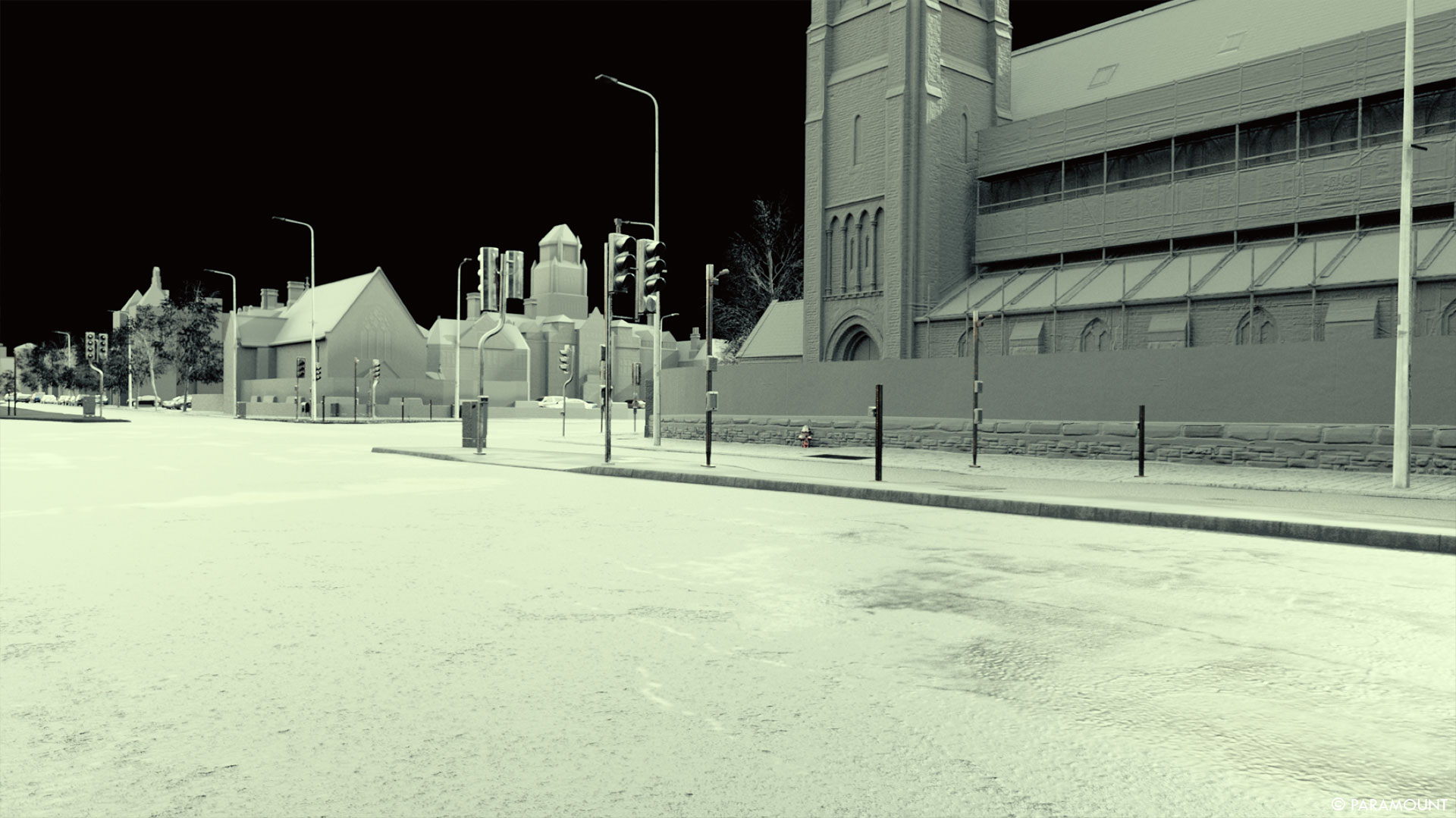
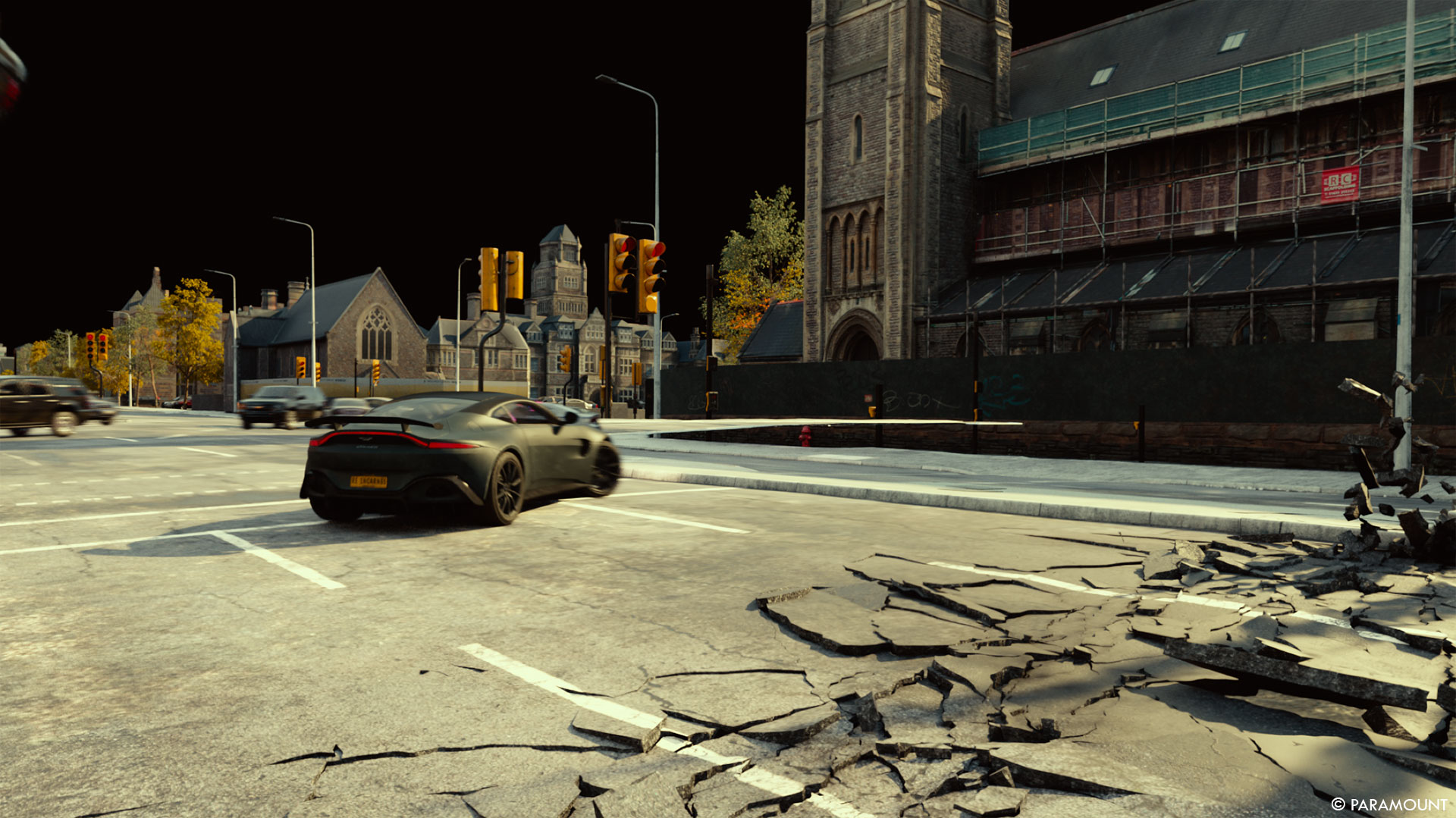
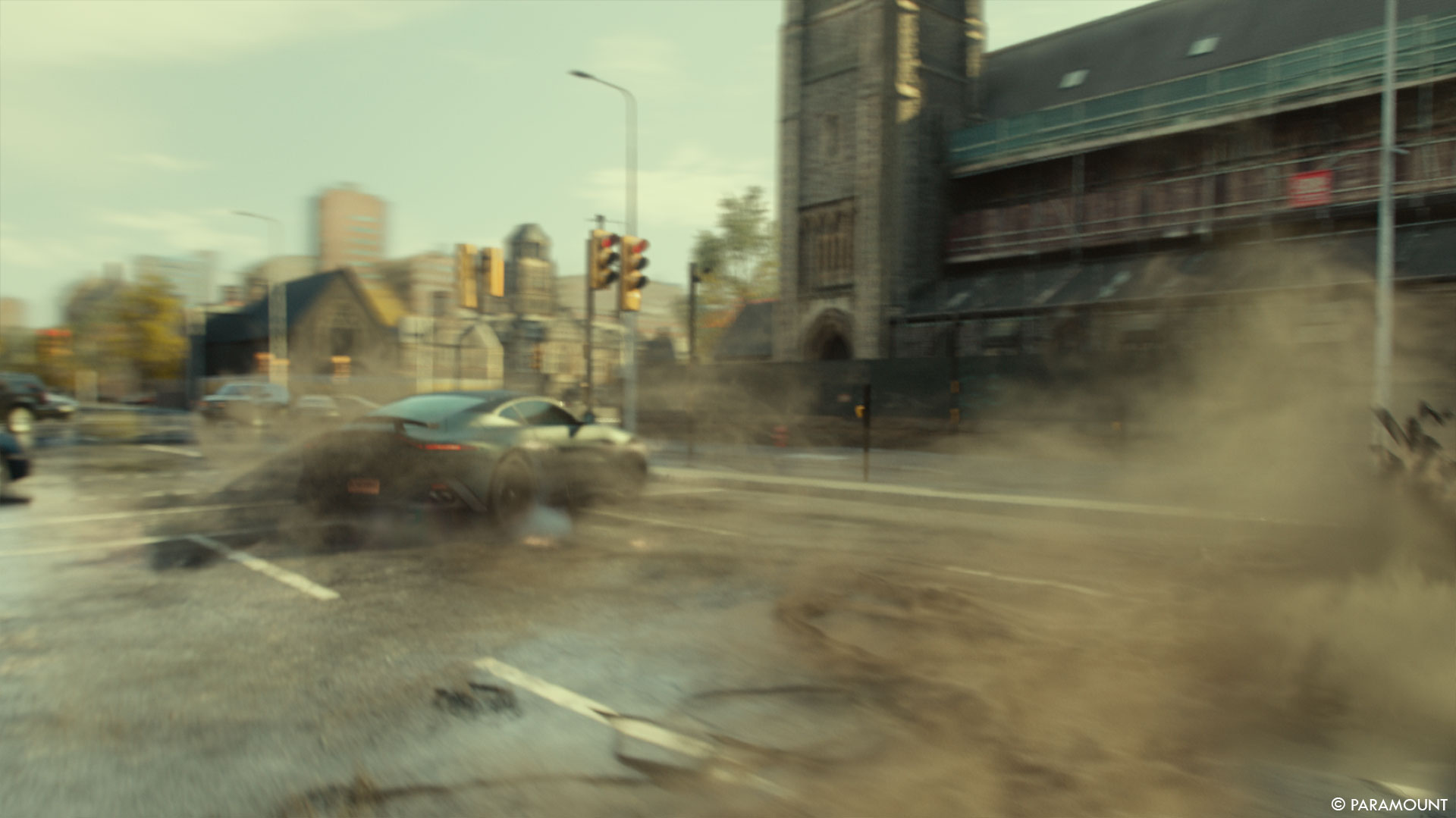
Did you want to reveal any invisible effects?
Well I would rather you just guess. But not everything in there is real of course but a lot is.
Old school film making at its best.
Is there something specific that gives you some really short nights?
Not really, or shall I say nothing I could actually solve without completely blowing up my budget. Shots were highlighted early on as ‘hot potatoes’ I call them that for some reason were problematic. Then resources are ring fenced and we try our best to minimize the pain.
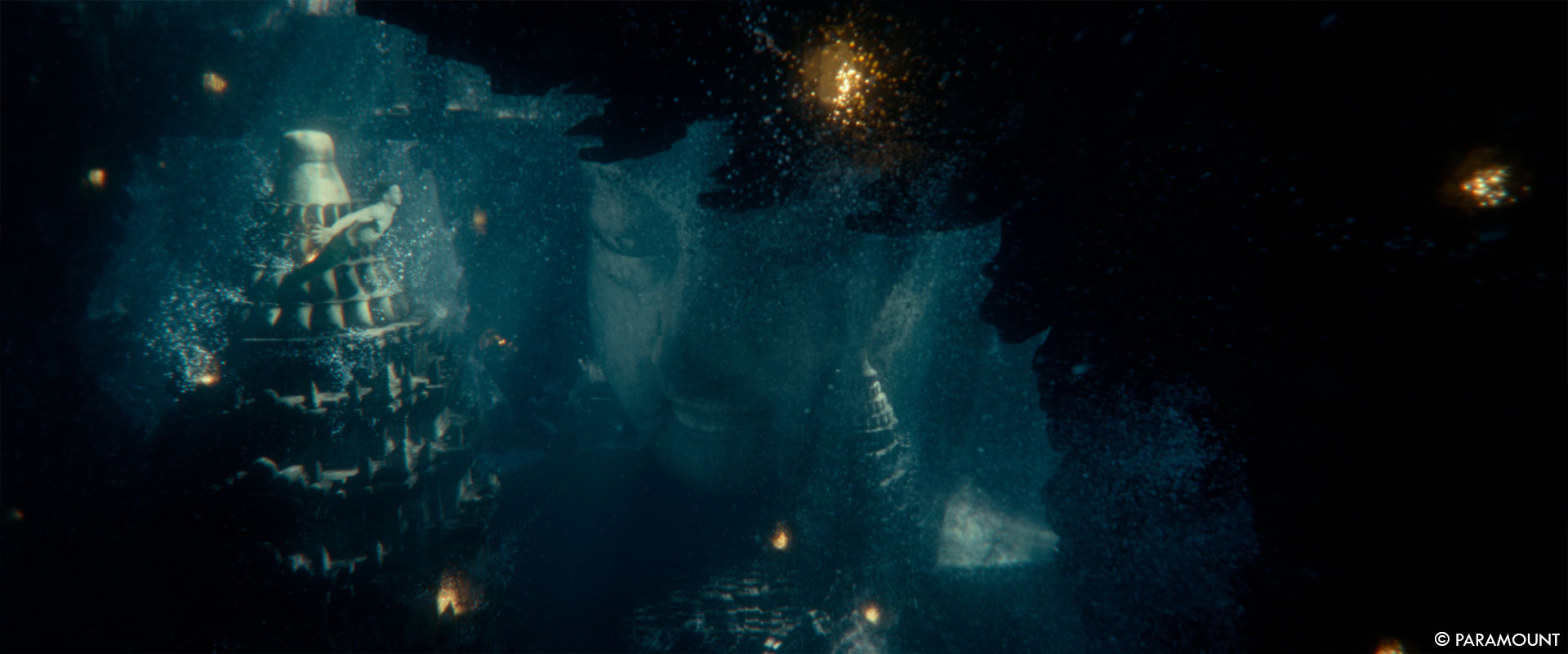
What is your favorite shot or sequence?
Free fall I think. It is a shame the sequence never made the big screen. Would have been exciting, very first person feel.
What is your best memory on this show?
Crew from both shoot and post. Good crowd as usual and it makes for a pleasant and healthy experience even when you’re under the gun.
How long have you worked on this show?
It being my first ever pandemic show far longer than usual. Give a take a few months nearly 2 years,
What’s the VFX shots count?
Approx 1100.
If it’s not a secret, are you already busy on a new show?
Yup getting busier by the second. Unsure I can say just yet what I am on but it has HUGE creatures. 😉
A big thanks for your time.
// Infinite – VFX Breakdown – DNEG
WANT TO KNOW MORE?
DNEG: Dedicated page about Infinite on DNEG website.
Paramount+: You can now watch Infinite on Paramount+ (in selected countries).
© Vincent Frei – The Art of VFX – 2021






